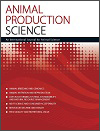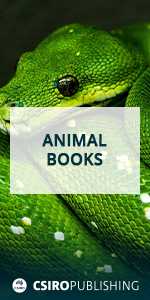Animal Production Science
Volume 65
Number 9 2025
Climate actions in the livestock industry have primarily focused on reducing greenhouse-gas emissions, whereas adaptation has often been addressed separately. As climate change progresses, a more integrated approach is essential. This paper examines the co-benefits and trade-offs of combining adaptation and mitigation interventions at the ruminant livestock farm level, presenting two Australian case studies as examples. Strengthening this integration is crucial for developing resilient and low-emissions livestock production systems.
This article belongs to the collection: Australasian Dairy Science Symposium 2024.
The cornerstone of Indian society is livestock husbandry, which is providing rural populations with nutritional security and significant amount of jobs. In temperate, subtropical, and tropical locations, seasonal stresses result in significant losses in livestock productivity. Maintaining livestock productivity and livelihoods depends on innovative and versatile ways to deal with these challenges. Alternative feed resources such as Moringa oleifera with potential nutritional and medicinal benefits can improve the resilience and production performance of goats across various seasons.
As part of the natural process of feed digestion, cattle produce methane, which is a potent greenhouse gas. This study evaluated the impact of fat in grass hay-based cattle diets by including by-products from cereal/oilseed processing and determining the impact on methane emissions. Overall, higher dietary fat reduced methane emissions; however, it reduced digestibility of the diet, which is an important consideration for its impact on animal productivity.
South Africa and Western Australia have long histories of livestock production and predator management, which impacts livestock productivity and viability. A survey of producers in both regions found farm sizes to be generally similar. More predators reside in South Africa, and as poison use is illegal, most farmers rely on shooting as their primary control method. Losses to predators are higher in South Africa, where predator management is responsive rather than proactive, unlike the Recognised Biosecurity Groups in Western Australia.
Tenebrio molitor, Hermetia illucens, and Zophobas morio are species rich in nutrients essential for animal nutrition. However, it is still unclear whether these species are studied with the same frequency, which areas of animal production benefit the most from their use, and the main objectives of the most recent studies. Identifying these knowledge gaps can support the development of innovative research on the use of insects in animal feed.
Transportation stress in poultry negatively impacts bird welfare, productivity, and meat quality. This study evaluated the effectiveness of an anti-stressor supplement combined with suitable lairage conditions to alleviate such stress. Results, validated using molecular tools, showed significant improvements in bird health and meat safety. The formulated anti-stressor package effectively reduced stress, enhanced profitability for stakeholders, and supported the One Health approach by ensuring better meat quality and safety, highlighting its potential as a practical solution in poultry production systems.
Researchers have been exploring sustainable feed alternatives for broiler chickens due to the rising costs of conventional feed ingredients and environmental footprints associated with agricultural by-products. This study investigated the use of processed and fortified cassava peel meal as a replacement for corn in broiler diets and found that it supports growth and reduces production costs without compromising gut health. However, some morphological alterations were observed in the liver and intestinal tissues of the chickens, which require further investigation.
In the south-west of Western Australia, weaned lambs typically graze dry pastures and crop stubbles from late spring to autumn, which limits growth rates without supplementation and can contribute to ill-thrift and mortality. This study tested whether incorporating grazing of standing lupin crops improves whole-farm profitability. Grazing lupins on 7% of the farm area increased profitability by almost A$30,000 (A$200/ha), primarily by increasing stocking rate. Across a range of crop yields and prices, grazing was always more profitable than harvesting.
We applied tree-based machine learning techniques to predict weaning weight in Hair goat kids, offering a fresh approach to goat farming. We used these tree-based machine learning models to analyze a variety of data sources, such as herd features and environmental factors like weather and geography. We found that these methods achieved strong predictive performance, suggesting that incorporating diverse environmental data into weight prediction models can help goat farmers make better decisions, especially with the challenges posed by climate change.
The purpose of this study was to evaluate the growth curves of three broiler chicken strains and the effects of different dietary nutritional densities on growth performance. The Gompertz model explained 99% of the variation in chicken weight. Chickens fed a regular diet had slower maturation and lower growth rates, whereas Strain A showed lower bodyweight and feed intake than did Strains B and C. Higher nutritional density diets increased growth rates, but all strains exhibited similar allometric growth patterns.





